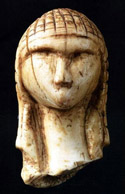Anthropology, Department of

Department of Anthropology: Faculty Publications
Document Type
Article
Date of this Version
May 1998
Abstract
The findings about the ways in which components of men's human capital is translated into human capital of offspring are intriguing both for what the findings show about secular trends in fertility, consequences for child accomplishment, and for what they show about the importance of the child's mother in linking the father to the child. It is this issue, the mother as link to child and the nature of the father's relationships with the mother that I make the center of my remarks.
There are several things to keep in mind when we try to grasp the evolutionary big picture and to make sense of men in human families as we now find them in postindustrial western society. We humans of' today carry with us the effects of selection in past environments. These effects are evident in our physical and behavioral makeup. Although we cannot know in detail the past physical and social environments in which our ancestors evolved, we can make various informed guesses, based on an understanding of how morphological, behavioral, and life-history features act together in other species. The ethnographic and historicall literature provide data of another type, allowing us to see men playing various domestic and paternal roles. In these different settings, however, the concrete form of social institutions can vary so widely that a unitary picture of men in families does not emerge. There are certain regularities of human experience that are worth reviewing for the purpose of thinking about men in families in modern western society.


Comments
Published in:MEN IN FAMILIES: When Do They Get Involved? What Difference Does It Make?, edited by Alan Booth and Ann C. Crouter. Copyright (c) LAWRENCE ERLBAUM ASSOCIATES, PUBLISHERS, 1998. Used by permission.